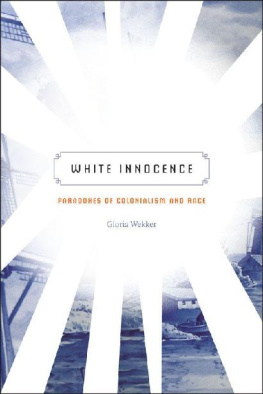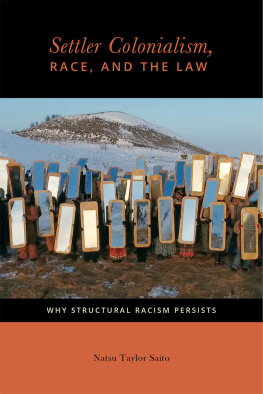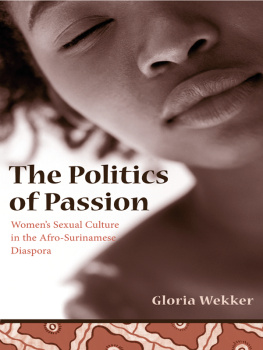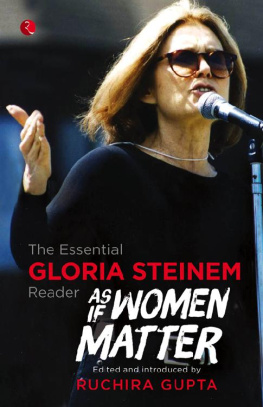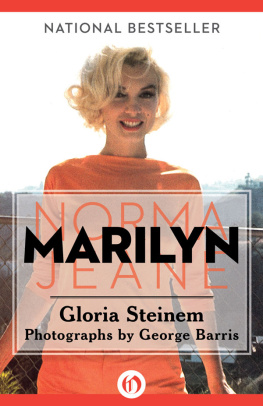WHITE INNOCENCE
Paradoxes of Colonialism and Race
Gloria Wekker
Duke University Press
Durham and London
2016
2016 Duke University Press
All rights reserved
Printed in the United States of America on acid-free paper
Designed by Amy Ruth Buchanan
Typeset in Quadraat by Copperline
Library of Congress Cataloging-in-Publication Data
Names: Wekker, Gloria, author.
Title: White innocence : paradoxes of colonialism and race / Gloria Wekker.
Description: Durham : Duke University Press, 2016. |
Includes bibliographical references and index.
Identifiers: LCCN 2015042542 |
ISBN 9780822360599 (hardcover : alk. paper) |
ISBN 9780822360759 (pbk. : alk. paper) |
ISBN 9780822374565 (e-book) |
Subjects: LCSH : RacismNetherlands. |
NetherlandsRace relations. | Sexual minoritiesNetherlands.
Classification: LCC dj92.b53 w455 2016 |
DDC 305.8009492dc23
LC record available at http://lccn.loc.gov/2015042542
Cover art: Hand-painted Delft blue plate, Holland (details). Christine Osborne Pictures / Alamy Stock Photo.
To future generations of antiracist activists
To Robin, Rosa, Minne, Finn, Milan, Ceriel, Ravi, Josephine, and Lucy
To my brother Paul (19592011)
CONTENTS
... and on the other side, the bright look of innocence, the white dove of peace, magical heavenly light
Frantz Fanon, Black Skin, White Masks

This book has been a long time in the making and thinking through. In the course of the past two decades, after coming back to the Netherlands from Los Angeles in 1992, where I had done my PhD, looking at the Netherlands with fresh eyes regularly sent frissons of discomfort and alienation up my spine. My anthropological eyes, making the familiar world strange, received strong, new impulses to make sense of the Netherlands, where I had grown up after I was one year old. After my return, I often had the feeling that I was involuntarily seeing the emperor, the Netherlands, without his clothes on, in his most detestable nakedness. It now often struck me that interracial situations, conversations, and phenomena that would be totally unacceptable in a U.S. context would pass without any frowns or critical comments in the Netherlands. Starting from the 1990s and into the first decade of the twentieth century, this process was intensified by an unprecedented turn toward a neorealist discourse (Prins 2002), when the murders of populist politician Pim Fortuyn in 2002 and filmmaker Theo van Gogh in 2004 gave rise to an exceptional bluntness in the interracial domain. The evasive attitude around race that had been customary in civilized circlessomewhat like our impulse, as Toni Morrison (1992a) remarked about the United States, not to talk with the hunchback about his humpvirtually disappeared. Many Dutch people, never shy in voicing their opinions, now felt justified in uttering statements, especially toward Muslims, one more offensive and willfully humiliating than another. It is worth recollecting that in the 1970s and 1980s, it was Moluccan and Afro-Surinamese Dutch people who were thought to be the unassimilable Other. Meanwhile, what remained the same was that in the avalanche of publications attempting to understand society and the resentment afflicting the white Dutch population, there was an avoidance of race as a fundamental social and symbolic grammar orchestrating affect and understandings, a glaring omission that induced me to write this book. It is also one of the ways in which I am realizing the program I had in mind when I formally accepted the chair in gender and ethnicity, Faculty of the Humanities, at Utrecht University in 2002, to study whiteness (Wekker 2002a).
We are living in hopeful times: a second wave of antiracist activism is taking off. It is very heartening to see that a new generation of brave antiracist activists has stood up in the past years both outside and inside the academy. I dedicate this book to them, and to a generation after them, my grandnieces and grandnephews: Rosa, Robin, Minne, Finn, Milan, Ceriel, Ravi, Josephine, and Lucy, a rainbow-colored tribe. May they all live in a world that recognizes them for who they are and that will let them live in active solidarity or without having to carry the burden of their skin color, thus without white innocence.
I want to thank my colleagues at the Department of Womens Studies, at Utrecht University, with whom I worked so hard for so many years: Rosemarie Buikema, Rosi Braidotti, Berteke Waaldijk, Sandra Ponzanesi, Iris van der Tuin, Marta Zarzycka, Babs Boter, Eva Midden, and Kathrin Thiele. We would not have gotten anywhere without the steady support of Trude Oorschot. I think with fondness of the many talented students in the one-year master of arts program, of which I was the coordinator until 2012, and whom I have had the pleasure to teach and see grow. I am always amazed to get news from them and find out where they have wound up and what each of them is doing to make a difference in the world. Especially dear to me are the students I have supervised through their PhDs, Cassandra Ellerbe-Dueck, Sabrina Marchetti, Lena Eckert, and Shu-yi Huang; and the students that I am still supervising, Heather Hermant, Phoebe Kisubi Mbasalaki, and Yvette Kopijn, from whom I learn so much and who keep me on my toes. I also thank Shu-yi and Heather for inviting me to their home universities, Shin Hsin University in Taipei, Taiwan, and York University in Toronto, Canada, where a tribute to Audre Lorde, The Contemporary Urgencies of Audre Lordes Legacy, jointly organized with the University of Toronto, took place in March 2013. I received much-welcomed responses from Jin Hariwatorn, Enakshi Dua, Anna Aganthangelou, and Honor Ford Smith on an early version of . I thank Maayke Botman for the many conversations about the way that race works in the Netherlands that we have had in the course of the years. My student assistants have been very helpful. I especially want to thank Erin van de Weijer, who helped me out on numerous occasions with making PowerPoint presentations, and most recently I have depended on Mirna Sodre de Oliveira. Mark Hazeleger has been indispensable to solve my computer blues at a moments notice, and I thank Gon Buurman for her fine photography.
I want to acknowledge my colleague Philomena Essed for her courage in putting everyday racism on the agenda in the Netherlands at an early stage. I also thank her and Isabel Hoving for their initiative to bring out the edited volume Dutch Racism in 2014, after three decades of silence on racism. I also wish to thank professors Nina Lykke, Cecilia sberg, Berit Starkman, and my fellow scholars at GEXcel International Collegium for Advanced Transdisciplinary Gender Studies at Linkping University, Sweden, where I spent a two-month sabbatical in November and December 2009. In addition, this book was also made possible by a years sabbatical at NIAS , the Netherlands Institute for Advanced Studies, in Wassenaar, in 20112012. I have given many talks in the Netherlands and abroad in the past years, too many to mention here, but I would like to collectively thank the people who invited me and my audiences for their feedback and allowing me to put my ear to the ground in so many different places, from Paramaribo to Tallinn to Cape Town.
Thanks to historians Rosemarijn Hoefte and Alex van Stipriaan for commenting on the introduction. An earlier version of was delivered as a presentation at Feministisch Verzet (Feminist resistance) in Utrecht, on November 15, 2013. Thanks to research MA students at the time, Annette Krauss, Gianmaria Colpani, and Katrien Smiet for inviting me. Thanks to Dineke Stam for her comments on the coda.



